![]() 1st Battalion 22nd Infantry
1st Battalion 22nd Infantry ![]()
SGT Grover C. Hart
G Company 22nd Infantry
Service from the Philippine Insurrection through World War I
Grover Cleveland Hart was born in Port Washington, Tuscarawas County, Ohio on May 5, 1884.
He enlisted as a Private in
Company G 22nd Infantry for a period of three years on December
1, 1904
at Kansas City, Missouri. His enlistment record indicated that he
stood 5 feet 7 inches tall, had black
hair, blue eyes and a dark complexion. His previous occupation
was listed as Lineman.
Hart joined Company G on February 15, 1905 at Camp Keithley, Island of Mindanao, in the Philippines.
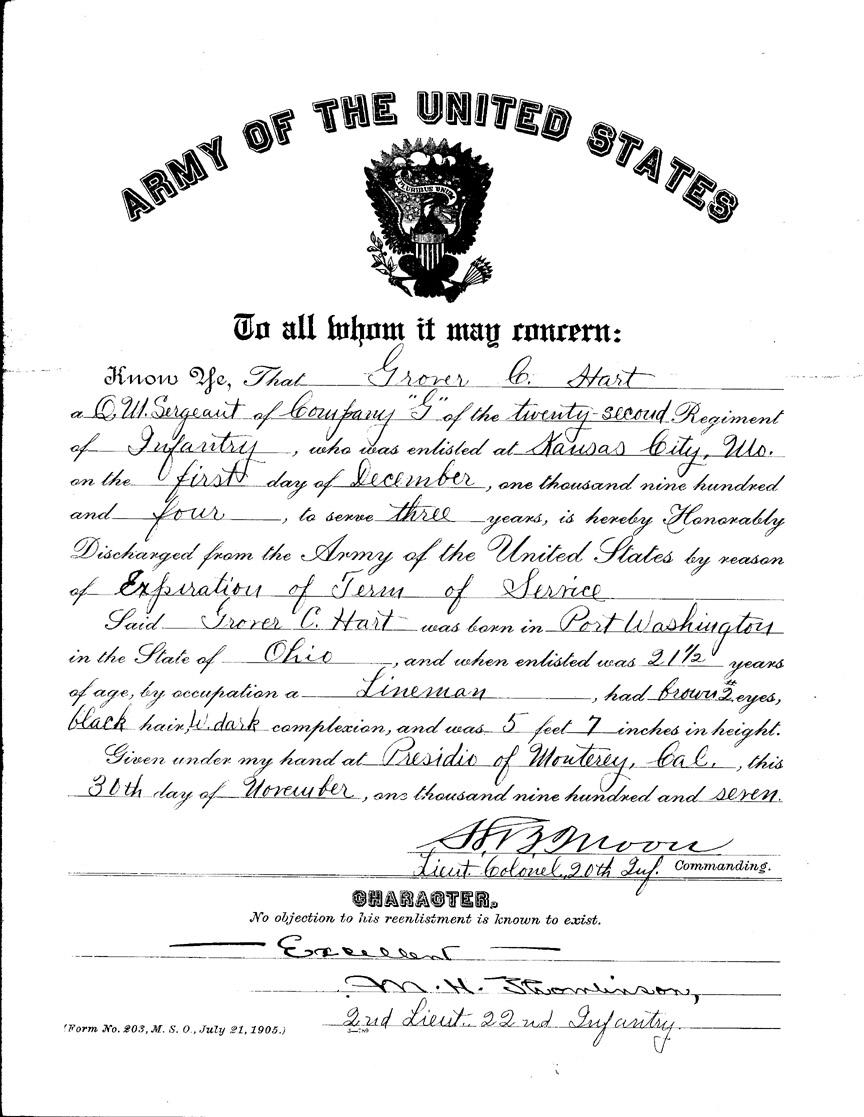
SGT Grover C. Hart's discharge from the US Army
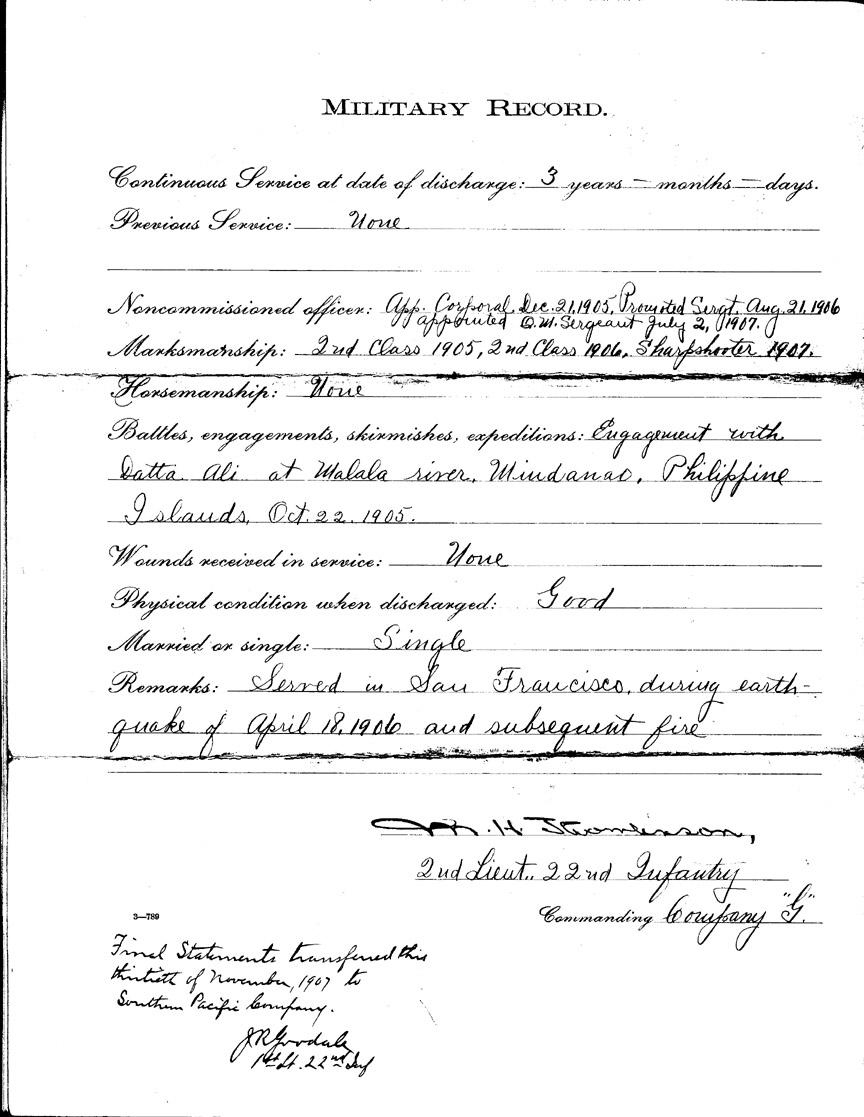
Grover C. Hart's record of military
service with the 22nd Infantry, noting service in the engagement
with the Datu Ali
and also during the 22nd's duty in the San Francisco earthquake
and fire.
Grover C. Hart was discharged
with the rank of Quartermaster Sergeant from the US Army on
November 30, 1907,
at the Presidio of Monterey, California after serving three years
in the 22nd Infantry.
Sometime after his discharge he
went to work in San Francisco, as a lineman for PG & E.
He did a lot of work on the electrical part of the 1915 Panama
Pacific Exposition
which was built on land-fill debris from the 1906 earthquake,
(today known as the "Marina" - on S.F. Bay - still
existing there is the "Palace of Fine Arts" by
Architect Bernard Maybeck)
With the entry of the United
States into the World War, Grover Hart re-enlisted
in the Army and was commissioned a 2nd LT in the Signal Corps.
In January 1918 he joined the
5th Field Battalion of the US Army Signal Corps,
part of the American Expeditionary Force in France.
He served on the front lines in
France in Company B 317th Field Signal Battalion 92nd Division
during the Meuse-Argonne Offensive of 1918.
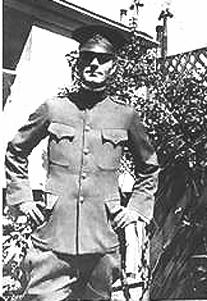
Lieutenant Grover C. Hart
In his letters home, Grover Hart
related the long, tiring and dangerous work he did with the
Signal Corps. Communications in modern warfare are vital, and in
the days of WWI,
radio had not yet been perfected. Field telephones and telegraph
systems
were the standard of the day, and required wire lines connected
among units
who needed to stay in contact. Many of these lines were laid in
shallow trenches,
dug 2 feet wide and about 3 feet deep. Stakes served as the
"telephone poles" to which the lines
were attached. At each end, the lines connected to switchboards,
which could then send the signal
to various destinations. Due to his expertise in such matters
Hart was made instructor for the Battalion.
In the course of laying and
repairing the communication lines, LT Hart and his men utilized
cars, trucks, motorcycles and horses. One letter home told of his
spending eight hours "in the saddle".
Often they had to take cover under their vehicles from strafing
and bombing attacks
by German aircraft. Hart injured his left shoulder in a
motorcycle accident, due to being
thrown out of the sidecar in which he was riding. He never
reported the injury,
knowing such a report would take him out of the front lines.
The shoulder gave him problems for the rest of his life, but at
the time, he wanted to "stay in the action".
LT Hart's duties kept him at the
front lines for much of the time,
where he experienced shelling from the German artillery,
and witnessed action in the skies above the trenches.
On one occasion a German
aircraft was shot down by an Allied plane,
and crash-landed near Hart's and his men's position. He described
the air battle
which took place above their positions as 25 to 30 planes in a
"dog fight". The disabled German plane
came out of the fight and started alternating first nose down,
then nose up,
settling in this manner back & forth while descending until
it struck the ground nose first.
He took his motorcycle to the scene and found the pilot dead, and
helped remove him from the wreck.
The German pilot had been shot in the head, which was the actual
manner of his death,
but also crushed in the impact when it struck the ground.
In an effort to help out the Allied pilot with confirmation of
his victory,
LT Hart wrote the following letter to the Allied Air Section:
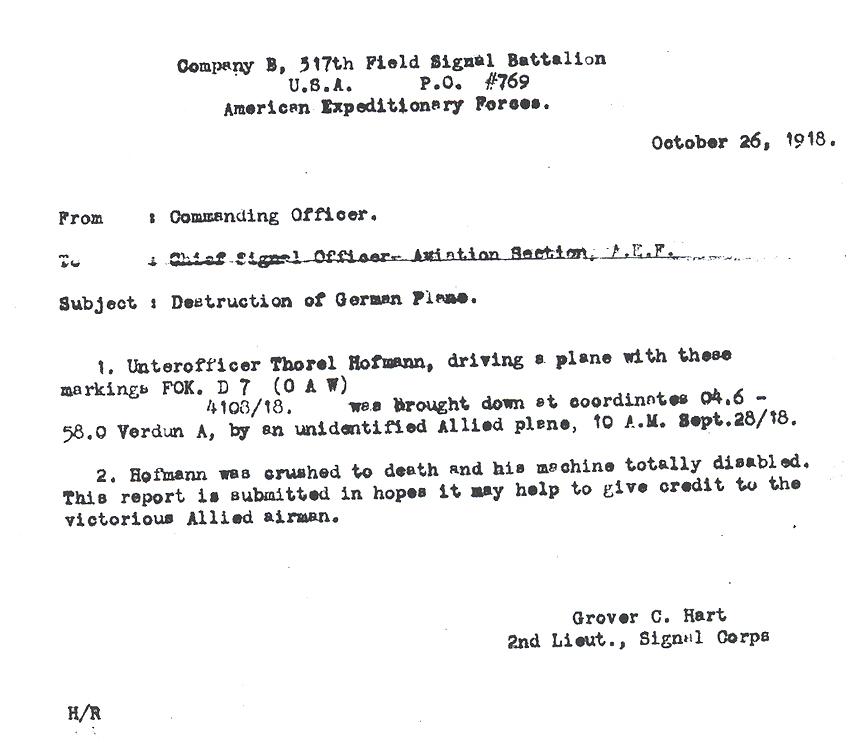
LT Hart also cut out the
aircraft marking from the fabric of the German airplane.
It returned home with him, along with several other souvenirs of
his time in the trenches.
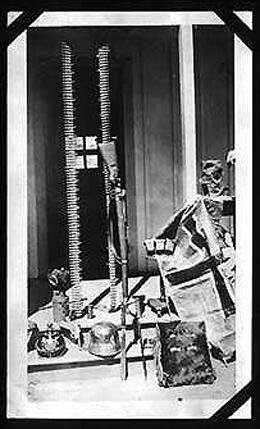
LT Hart's souvenirs from World War I
Front row left to right
in the above photo are:
German Artillery dress helmet, Luger pistol, M1916 German steel
helmet, KAR98 German assault rifle & bayonet,
French bayonet, German horsehide knapsack issued to assault
troops
Back row left to right:
German gas mask & cylinder, ammunition belts for German
machine gun, German infantryman's leather 3 pouch ammo carrier,
aircraft insignia "cross" cut from German Fokker DRVII
aircraft.
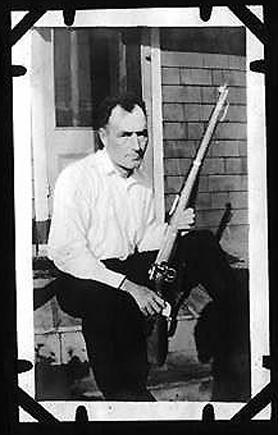
Grover C. Hart with captured German KAR98 assault rifle from WWI.
After the end of the war, Grover
Hart was again discharged, this time as a 1st Lieutenant.
His service in two wars is testament to his patriotism and love
of his country.
He is the embodiment of the 22nd Infantry's mottos of
Deeds Not Words
Regulars, By God !
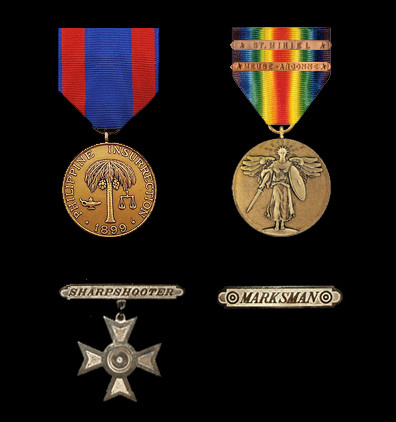
Decorations of Grover C. Hart
Grover C. Hart died on February 15, 1965 at San Francisco, California.
Burial:
Golden Gate National Cemetery
San Bruno
San Mateo County
California
Plot: 2E, 0, 18
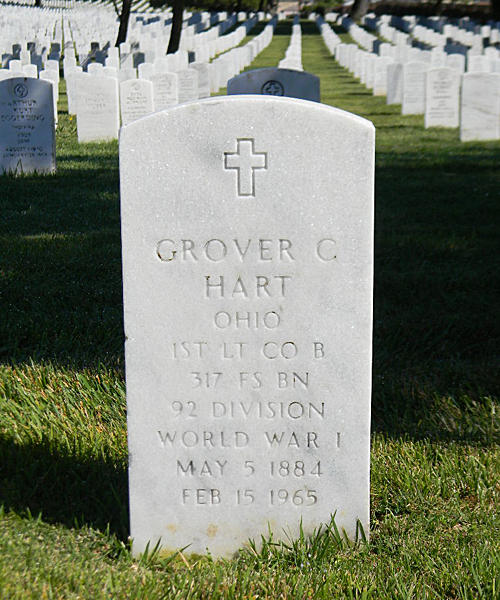
Grave marker for Grover C. Hart
Photo by E. Sweeney from the Find A Grave website
All personal photos of Grover C. Hart and his
documents are copyright © Michael Belis 2004
on behalf of the 1st Battalion 22nd Infantry Website
Home | Photos | Battles & History | Current |
Rosters & Reports | Medal of Honor | Killed
in Action |
Personnel Locator | Commanders | Station
List | Campaigns |
Honors | Insignia & Memorabilia | 4-42
Artillery | Taps |
What's New | Editorial | Links |